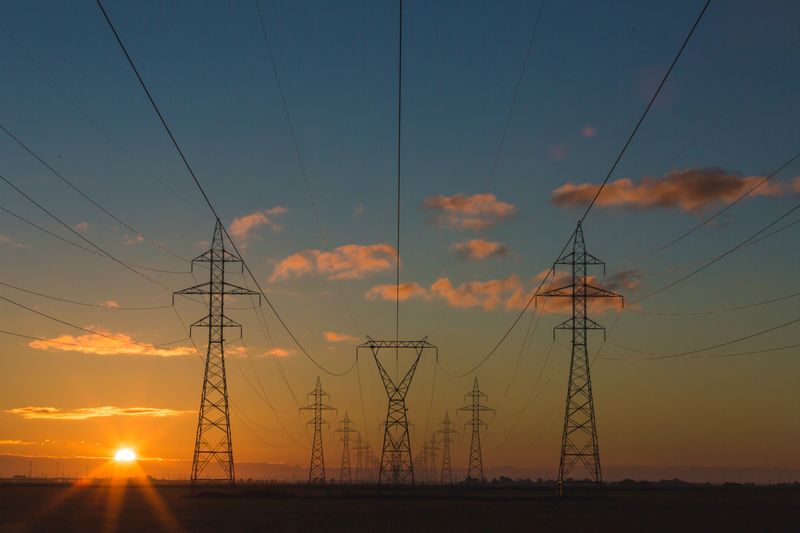Tired of the ol' energy debate about crypto? Hedgehog contributor Grant Denver delves deep into why the energy debate is not as dire as people think.
It’s no secret that there are decision-makers in power centers worldwide who want to regulate crypto to death. They hate everything you love about it—decentralization, your access to high alpha investments out of their control, you clowning people on Twitter and Discord—all of it.
Criticisms of crypto’s environmental sustainability seem to be one of their greatest tools for convincing nocoiners to support anti-crypto regulations. And if you think your token will escape their wrath because “we’re proof-of-stake and…,” then you must have missed the outrage directed at all NFTs due to crypto’s energy consumption. Critics' desired regulations will be as devastating for the growth of proof-of-stake Solana just as much as proof-of-work Ethereum or ETH2.
So, what’s the solution? The crypto community and people building in the space need to better understand how energy markets work and how to frame crypto’s energy use.
For instance, the common talking points used to dunk on ETH and BTC maxis are lazy, bad, and manufacturing consent for the wholesale regulation of crypto. Most critics have been misinformed about energy markets and renewable technologies. This blog post will help you to educate others and defend your bag.
But first, we need to accept a fundamental reality.
Your life under energy austerity would be much worse
People are so blissfully disconnected from the realities of energy production and consumption that they do not internalize how much their quality of life would decline under energy austerity. Until you experience recurring rolling blackouts, conscious thought about whether or not your power will work tomorrow completely fades into the background in the developed world. As it should!
The high quality of life that we’ve all grown up enjoying—anyone who has ever owned a computer, taken a warm shower, or only rarely wondered if the lights would be on the next morning—requires energy, a lot of it.
Have you ever seen one of those videos that tries to visually show “How much is a billion dollars?”
Energy demand is like that. In 2019, the world consumed 4,099,000,000 (four billion ninety nine million) gallons of oil every single day. If you think that’s too much, Statista also references a more accessible number of 97,598 thousand barrels a day. But I personally have no intuition about what a thousand barrels of oil is and likely neither do you.
To put it in perspective:
A truck like this might hold up to 11,000 gallons. It would take 372,636 of them all holding 11,000 gallons to contain one day’s global oil consumption.
(https://pixabay.com/photos/kenworth-truck-tanker-3270560/)
I’m sure if you questioned people about how many gallons of oil are used every day, most would be off by at least an order of magnitude. Try it.
And it’s not as simple as just consuming less energy because even if everyone you met or even every person who owns Ethereum or Bitcoin dropped their consumption by 20%—making their life meaningfully worse—global oil consumption would still grow due to economic growth in the developing world. And you will personally never find me arguing against the abolition of extreme poverty.
No one needs to. We have the technology to live in a world where everyone can [eventually] have running water, reliable electricity, and the ability to moderate the temperature of their household.
The story becomes even more complicated from a policy angle because western social safety nets, particularly, social security and pensions are predicated on the idea that the economy will continue to grow.
If people want that number of gasoline consumed to meaningfully trend towards zero, we’re going to need decades and decades and decades of smart investments in nuclear power, batteries, and other green tech to get there. Campaigns for ‘no growth’ or negative growth are a call for the abolition of social safety nets—it’s austerity under the guise of environmentalism.
The point I want to drive home is that to produce our existing quality of life requires a mind-boggling amount of energy. This is just the oil required for one day. It doesn’t include wood, coal, natural gas, or any other sources. And most people want their lives to get better, not just stagnate.
Reducing your energy consumption can certainly be great. There’s never a reason to waste resources. However, that’s not a solution in itself. Plans to force others to reduce their consumption will result in a kind of environmental imperialism and authoritarianism. And they will fail.
We won’t be able to solve these problems if zero-sum mindsets lead us to war and cripple our institutions through austerity. All of the best paths forward involve embracing technology and engineering our way into a world of low carbon energy abundance.
So, how does this relate to crypto?
Refuting misconceptions about energy and crypto
If you’re going to advocate for crypto, and Web3 broadly, by refuting bad critiques about its energy consumption, you need to first understand the fundamental limits of your ability to persuade someone.
To start, no line of argument is interesting to anyone who does not believe that anything in crypto has utility. If you’re expending energy to convince them about something that they think is ‘useless’, ‘a scam’, and not even fun, then all other arguments will not hold weight.
First, you need to both believe and be able to articulate why at least one project has genuine value.
Let’s take the case of Bitcoin. It is the most energy intensive of all protocols. However, I personally believe that Bitcoin is strongly differentiated and the existence of a non-state, non-corporate money justifies the costs of proof-of-work. There are use-cases in crypto beyond Bitcoin. I’m not a maximalist, though.
For example, I think NFTs will unlock new possibilities in gaming. But before arguing about sustainability with a good faith critic, I would first have the conversation about why I believe Bitcoin is a project that should exist, has genuine utility, and is, importantly, not going anywhere.
And if you do not believe that a particular crypto has or will have genuine utility, you shouldn’t be buying it or mining it. Many tokens are going to zero or will become illiquid. People should not be buying them. Engineers should not be spending their time building for their network. Real, earnest projects will fail but there is a glut of scams and projects that are dead on arrival. No one serious disputes this.
Second, if this conversation is happening online then it’s mostly going to be happening in bad faith. When there’s an audience watching, most people are focused on ‘winning,’ not improving their understanding of the world. They are unlikely to publicly change their mind due to your replies to their posts.
In these scenarios, ie. on twitter, instead you should be acting in a way that will be most persuasive to undecided or high-openness 3rd parties who are following the discussion.
If you want to change people’s perspectives, you will need to address genuine critiques in a way that is interesting and attractive to others. Rallying your troops by dismissing critics in ways that are crude and juvenile may feel good but it does nothing to help secure your bag against regulatory action.
That’s not to say comments on Twitter don’t sometimes warrant it. The arguments made against crypto on the grounds of energy use do not tend to be well-researched.
Most of the time people will just be regurgitating a half-baked political talking point. They do not have their own model for understanding the interplay between energy markets and crypto.
These people may change their opinion in the future if you treat them well. If you can successfully refute some of their talking points, they may realize they have been misinformed.
Let’s look at some of the most rampant misconceptions.
Common energy and crypto misconceptions
“All energy that is produced can be stored or used”
This is by far the biggest misconception that people have. If you see an attack piece arguing against Bitcoin’s energy usage, it will feature an estimated use of energy by the network and then argue that all of that energy could have been spent otherwise. This stems from the false belief that all energy produced can be stored or otherwise used. This is blatantly not true.
Unlike your preferred crypto protocol’s token, energy is not globally fungible. It is produced in a specific location and must be stored in a battery (or similar system, ie. pumped storage hydropower) or transmitted to where the electricity is needed. At present, batteries are extremely limited. You should assume that energy that is not being immediately dispatched for use is being wasted.
In the US, California has by far the largest battery storage of any state. At present, they purchase surplus energy from wind and solar farms from 9 am to about 1pm and then sell this energy as the sun sets, solar output declines to 0, and energy demand spikes. The rest of the energy, as represented in the graph, is either dispatched immediately or wasted.
When there’s a gap in renewable energy when the wind doesn’t blow or the sun isn’t shining, it is filled overwhelmingly by energy produced by natural gas power plants. This is California, a sunny and progressive state in an extremely wealthy nation.
The next time you see someone complaining about Bitcoin’s energy use, you should inform them about the present status of grid battery storage and the reality that energy is not globally fungible. A significant amount of the energy that has been used to mine Bitcoin would have otherwise been wasted. All of the most critical analyses abstract away this reality to make their case.
“The cheapest energy is high-emissions energy”
This kind of idea reigns supreme among the same people who naively believe we could presently run civilization solely on intermittent renewables and battery storage. Which all of you already know does not even approximate the truth. Not even in California. In their next argument, sometimes they’ll tell you about how solar is perfect because the marginal cost is zero. Sunlight is free. This is certainly a huge reason why solar continues to grow and will be key to decreasing global emissions. However, this line of argument shows some serious cognitive dissonance.
The cheapest energy isn’t coal, wood, or even natural gas—it’s energy that would otherwise be wasted. A power plant, generally—there are too many caveats to cover in this article—makes money when it sells energy to someone who wants it. If the energy is wasted, no one pays them for it.
That’s where crypto can really move the needle and contribute towards sustainability. Any crypto project which can readily stop and restart its nodes/miners can purchase this recurring, otherwise wasted energy for some non-zero price.
This is already happening. There are Bitcoiners in California who use the excess energy from their residential solar panels on a sunny day to mine Bitcoin, turning this otherwise wasted energy into security for the network and satoshis in their wallet. When there is insufficient excess energy, they stop mining. How is this detrimental in any way?
For a more extreme example, before China banned Bitcoin mining, there were whole operations that migrated to Sichuan’s hydro power plants during the wet season. Gigawatt hours of energy spent on mining Bitcoin would have otherwise been wasted, “...hydropower plants in the area generated 41.5 billion kWh of electricity just in 2017, with a total excess of 16.3 billion kWh that went to waste,” as reported by CoinDesk.
“There are no positive externalities from crypto’s energy usage, it hurts everyone else for the benefit of a few”
Even bad projects can encourage greater investment in energy infrastructure and help existing providers of low-emissions energy to increase their profitability. Through their demand for this intermittent energy, protocols can help early-adopters of solar and wind to turn otherwise wasted energy into additional revenue. All of this can help to mitigate the probability of rolling blackouts in the future. Profitable energy companies have the resources to reinvest in making their infrastructure more resilient to natural disasters and modernization of their operations to improve efficiency and resiliency.
Crypto technologies with similar dynamics and Bitcoin mining enable intermittent renewables to remain profitable as subsidies are sunset. Right now, in California, there is a reckoning due to a proposed change to net metering, residential solar subsidies. These subsidies allowed residential solar users to sell their energy back to the utility at the clearing market price, a price much greater than what they would pay a commercial solar farm. This led to rising prices and grid instability for lower-income people who do not own their own homes and overwhelmingly do not benefit from these subsidies.
If the net-metering households utilize their excess energy on Bitcoin mining or a similar intermittent, revenue generating crypto venture, they can recoup their investment without hurting the pocket book of their lower-income neighbors.
Another rabbit hole
Energy, just like crypto, is a deep rabbit hole. This blog post has only touched the surface of misconceptions around energy markets and its interactions with crypto, and particularly what many critics would consider the worst offender: Bitcoin.
If you want to help protect crypto from misguided and harmful regulations, spend more time learning and educating others about misconceptions around its relationship to energy. Our best path towards affordable, low emissions, and reliable energy involves embracing technology and aspiring towards energy abundance.
Grant Dever is a Nuclear Energy Scholar at the Foundation for Research on Equal Opportunity, a crypto-native community builder, and a freelance writer for hire. Check out his Twitter and newsletter.






